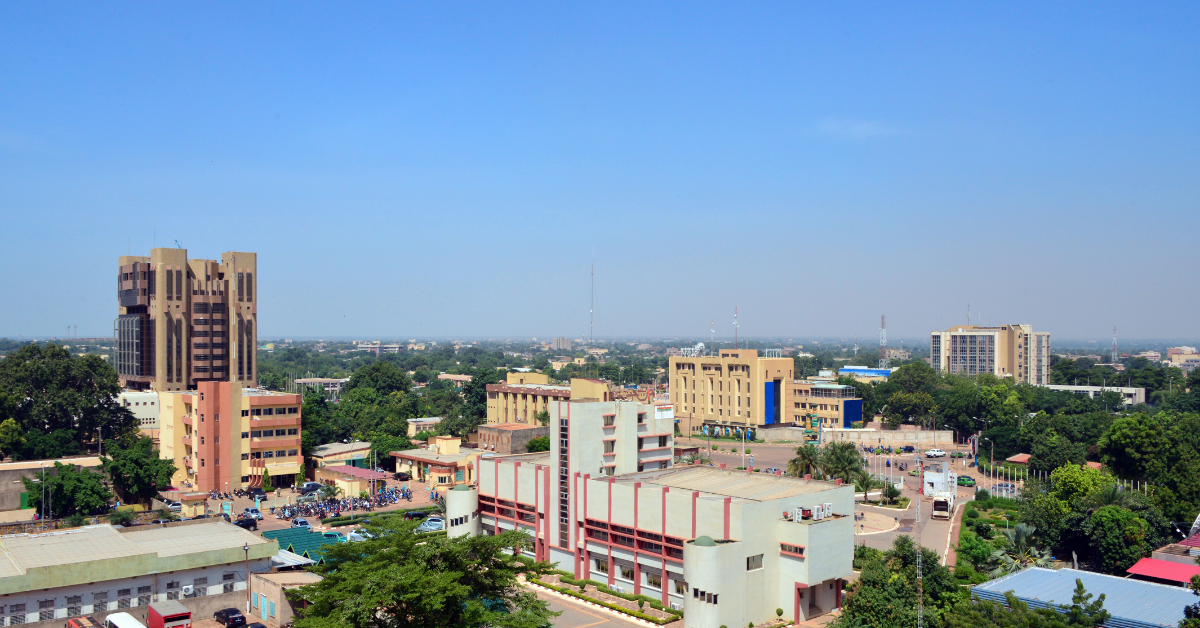Burkina Faso, a landlocked country in West Africa, is usually written in katakana as “ブルキナファソ” in Japanese. However, some historical and official documents use the kanji “布基納法索.” This form does not translate the meaning of the name but instead uses kanji as phonetic symbols to reproduce the sound. Understanding this practice helps explain how Japanese integrates foreign words into its writing system and reveals the cultural background of ateji, or phonetic kanji.
The Origin of the Kanji “布基納法索”
The name Burkina Faso comes from a combination of the Mossi and Dyula languages, meaning “Land of Upright People.” However, the Japanese kanji “布基納法索” does not express this meaning, but instead transcribes the sounds of the country’s name.
- 布 → Bu
- 基 → Ki
- 納 → Na
- 法 → Fa
- 索 → So
These kanji were chosen only because their Japanese readings approximate the sounds of “Burkina Faso.” For foreign readers, it is essential to clarify that this is not a translation, but a phonetic rendering.
Helping Foreigners Understand
Foreigners often try to interpret the meaning of kanji when they see them. However, “布基納法索” is not about meaning but about sound. For example, America can be written as “亜米利加,” yet neither “亜” (sub), “米” (rice), nor “利” (profit) relates to the country itself. It is simply a combination of kanji selected to approximate sound.
The same principle applies to other countries, as shown below:
| Country | Kanji | Explanation |
|---|---|---|
| America | 亜米利加 | Phonetic rendering of “America” |
| France | 仏蘭西 | Phonetic rendering of “France” |
| Germany | 独逸 | Phonetic rendering of “Deutsch” |
| England | 英吉利 | Phonetic rendering of “England” |
| Burkina Faso | 布基納法索 | Phonetic rendering of “Burkina Faso” |
Thus, when foreigners ask, it is important to explain that kanji here function as phonetic tools, not as meaningful words.
Historical Background of Country Name Kanji
From the Meiji era to the early Showa period, it was common for newspapers and diplomatic documents in Japan to write foreign country names in kanji. This practice was heavily influenced by Chinese phonetic transcription traditions.
Here are notable examples:
| Country | Kanji | Note |
|---|---|---|
| Canada | 加奈陀 | Phonetic rendering of “Canada” |
| Mexico | 墨西哥 | Phonetic rendering of “Mexico” |
| Spain | 西班牙 | Phonetic rendering of “España” |
| Portugal | 葡萄牙 | Phonetic rendering of “Portugal” |
| Italy | 伊太利亜 | Phonetic rendering of “Italia” |
For Japanese readers at that time, kanji were more familiar and readable than katakana, so such forms spread widely in print media and official records.
The Role of Kanji in Japanese
In Japanese, kanji are originally characters that carry meaning, but in the case of foreign names, they have also functioned as phonetic symbols. This demonstrates the flexibility of the Japanese writing system.
Even today, abbreviated kanji forms of country names are still in use in newspapers and official contexts:
| Kanji | Country | Example of Use |
|---|---|---|
| 米 | America | 米国大統領 (President of the US) |
| 英 | England | 英連邦 (Commonwealth) |
| 仏 | France | 仏大統領 (President of France) |
| 独 | Germany | 独外相 (German Foreign Minister) |
| 中 | China | 中日関係 (China-Japan relations) |
Burkina Faso has no established one-character abbreviation, but its existence as “布基納法索” shows how Japanese has historically adapted foreign names.
Ateji Culture and Modern Japanese
In today’s Japanese, katakana dominates the writing of foreign country names because katakana is more faithful to original pronunciation and avoids misunderstanding. However, kanji transcriptions still carry cultural value and serve as historical records.
The ateji (phonetic kanji) culture extended beyond country names to many imported words. Some remain in everyday use:
| Loanword | Kanji | Note |
|---|---|---|
| Coffee | 珈琲 | Borrowed from Chinese transcription |
| Tobacco | 煙草 | Refers to smoking leaves |
| Glass | 硝子 | Refers to transparent minerals |
| Beer | 麦酒 | Based on its raw material (barley) |
| Camera | 写真機 | Early semantic rendering |
Thus, “布基納法索” belongs to the broader ateji tradition in Japanese, reflecting how the language creatively adopted foreign concepts.
Conclusion
The kanji transcription of Burkina Faso as “布基納法索” is not a translation of meaning but a phonetic rendering of sound. This method, inherited from Chinese influence, was once widely used in Japanese. Today katakana dominates, but ateji survives as part of Japan’s linguistic heritage.
For foreigners, it is crucial to emphasize that these characters represent sound, not meaning. The example of Burkina Faso highlights how Japanese flexibly adapted to foreign influences. Ateji is both a historical legacy and a reminder of the richness of Japanese expression.






